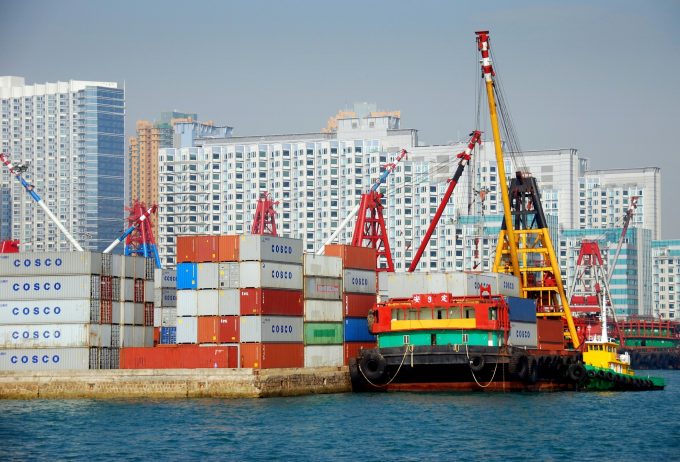Trade growth getting stronger, but ocean freight rates stay flattish
While rates on the transpacific continued to soften, and Asia-Europe trades showed marginal gains, the ...

The first tangible evidence that the container liner industry is on course for a profitable year comes from Chinese carrier Cosco, which expects a half-year profit of $272m.
Cosco, the world’s fourth-biggest carrier, told the Shanghai Stock Exchange yesterday it was forecasting an interim H1 net profit of about Rmb1.85bn, compared with a loss of Rmb7.2bn in the same period of last year.
“Freight rates for container shipping operations have increased year-on-year,” Cosco said in a statement to the bourse. “Container volumes have grown 34.7% and earnings have continued to grow from the base set in the fourth quarter of last year.”
In a recent spot market review, Drewry said freight rates “were more than one-third higher in the first-half of 2017”, following substantial increases across most tradelanes, which it described as a “huge correction after a disastrous 2016 for rates”.
The big question, however, is can the carriers sustain the rally into the second half of the year and beyond?
Drewry believes “the pendulum is swinging quite fast towards a carriers’ market”.
The consultant said: “With carriers on the verge of returning to profitability, thanks to these higher spot rates and improved contracts, combined with extra pricing power gained from M&A and stronger fundamentals, we think it highly unlikely that there will be a return to the pricing wars of early 2016.”
Patrik Berglund, chief executive of ocean freight rate benchmarking and data analyst Xeneta, agreed.
He told The Loadstar today he was “generally optimistic” about the liner industry and noted that the disappointing carrier results in Q1 were partly due to an overhang of low rates impacting the bottom lines of carriers.
Looking at the long-term market from Chinese main ports to North Europe, Mr Berglund said rates had moved “substantially up over the last nine months”.
Bottoming out in June last year at around $600 per 40ft, the Xeneta data recorded an average rate of just under $1,500 per 40ft leaving Q2, and has continued to pick up this month, he said.
Nevertheless, carriers are not having it all their own way on the transpacific tradelane. Mr Berglund noted that there was a “very different pattern” in the long-term market to the Asia-Europe route.
He said there had been an erosion of rates since the beginning of this year to both US west coast and east coast ports and the route was proving to be a “very volatile corridor”.
Meanwhile, after the massive jumps recorded on the Asia to US west and east coast components of the Shanghai Containerized Freight Index (SCFI) last week, spot rates have ticked down 3.3% for the west coast and 2.1% to east coast ports, to $1,333 and $2,307 per 40ft, respectively.
Elsewhere: for Asia to Europe, the SCFI saw a drop of 4.5% for North Europe, to $969 per teu, and by 4.7% for Mediterranean ports, to $906 per teu.
Carriers on the route that have spoken to The Loadstar in the past few weeks are “optimistic” for a good peak season and several are readying a fresh peak season surcharge, effective 1 August.
Comment on this article